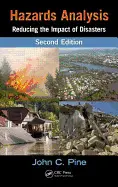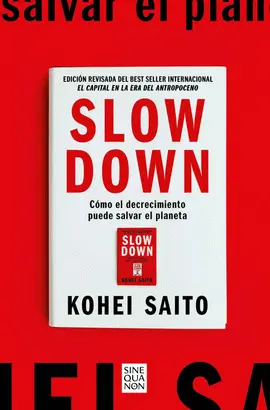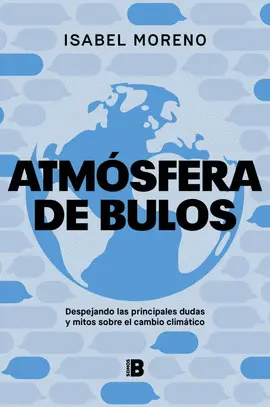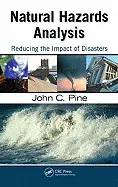- Editorial:
- CRC PRESS
- Materia:
- Ciencia - STEM
- ISBN:
- 978-1-4822-2891-5
HAZARD ANALYSIS REDUCING THE IMPACT OF DISASTERS
JOHN C. PINE
Biographical Note:
John C. Pine serves as the director of the Research Institute for Environment, Energy & Economics (RIEEE), and professor in the department of Geography and Planning, Appalachian State University, Boone, North Carolina. He joined the Appalachian faculty in 2009 after serving thirty years at Louisiana State University in Baton Rouge where he directed the graduate and undergraduate Disaster Science and Management Program. At Louisiana State University, he was a professor in the Department of Geography and Anthropology and the department of Environmental Sciences. His research on disasters and emergency management centers on emergency planning, risk assessment, and disaster recovery.
He has worked for many years with public agencies at the federal, state, and local levels as well as non-profit and private entities to identify strategies to enhance preparedness and community sustainability. His publications focus on hazards and disasters including Technology and Emergency Management from" "John Wiley (2007) and Tort Liability Today" "from the Public Risk Management Association (2005).
He is currently on the board of directors of the National Committee for the New River, the Learning Lodge at Grandfather Mountain, and an advisory board for the American Meteorological Society. His publications have been included in The Journal of Disaster Studies, Policy and Management, Disasters, Journal of Race and Society, International Journal of Mass Emergencies and Disasters, Oceanography, Journal of Emergency Management, Natural Disaster Review, Journal of Environmental Health," "and the" "Journal of Hazardous Materials. He received his doctorate in higher education administration and public administration from the University of Georgia, Athens, in 1979.
Brief Description:
"Preface The social, economic and environmental impacts from natural and human caused disasters have increased during the recent decades. The impacts from these disasters are seen on a global scale and are driving efforts to reduce adverse consequences on vulnerable populations and communities. We have attempted to reduce the costs of these disasters but continue to carry out policies that encourage development in vulnerable geographic areas of the world. With threats imposed by global warming, we see that many communities are subject to increasing levels of risk and can achieve sustainable development through appropriately informed planning, protection, mitigation and recovery strategies. Strategies to enhance community resilience to hazards must be based on research that integrates complex social, economic and environmental systems. Hazards Analysis: Reducing the Impacts of Disasters provides a structure and process for understanding the nature of natural and human caused hazards and strategies for building sustainable communities. The key to sustainability is acknowledging the unique nature of the local community and how geography, social systems, the economy and infrastructures influence a community's capacity to withstand and recover from a disaster. This book demonstrates how we use hazards analysis to identify and prioritize risks and develop approaches to community hazard mitigation. The role of hazard risk management is stressed for public, private and non-profit organizations. "--
Marc Notes:
Includes bibliographical references and index.;The impacts of natural and man-made disasters have been increasing at exponential rates over the past few decades. Our global interconnectedness and the scale of disaster events has grown to the point where catastrophic disasters have regional, national, and even global economic consequences. This volume presents a systematic process of hazards identification, vulnerability determination, and consequence assessment for the natural, built, and human environment. The book aims to examine strategies that may be taken at the individual, organization, community, and regional levels to reduce the adverse consequences of disasters and to foster sustainability. --;Provided by publisher.;Preface The social, economic and environmental impacts from natural and human caused disasters have increased during the recent decades. The impacts from these disasters are seen on a global scale and are driving efforts to reduce adverse consequences on vulnerable populations and communities. We have attempted to reduce the costs of these disasters but continue to carry out policies that encourage development in vulnerable geographic areas of the world. With threats imposed by global warming, we see that many communities are subject to increasing levels of risk and can achieve sustainable development through appropriately informed planning, protection, mitigation and recovery strategies. Strategies to enhance community resilience to hazards must be based on research that integrates complex social, economic and environmental systems. Hazards Analysis: Reducing the Impacts of Disasters provides a structure and process for understanding the nature of natural and human caused hazards and strategies for building sustainable communities. The key to sustainability is acknowledging the unique nature of the local community and how geography, social systems, the economy and infrastructures influence a community's capacity to withstand and recover from a disaster. This book demonstrates how we use hazards analysis to identify and prioritize risks and develop approaches to community hazard mitigation. The role of hazard risk management is stressed for public, private and non-profit organizations. --;Provided by publisher.
Publisher Marketing:
The impacts of natural and man-made disasters have increased exponentially over the past few decades. Moreover, with our global interconnectedness and the growing scale of disasters, today's catastrophic disasters can have regional, national, and even global economic consequences.
Following in the tradition of the successful first edition, Hazards Analysis: Reducing the Impact of Disasters, Second Edition provides a structure and process for understanding the nature of natural and human-caused disasters. Stressing the role of hazard risk management for public, private, and nonprofit organizations, the author and expert contributors cover problem solving, risk analysis, and risk communications to ensure readers are in a position to identify key problems associated with hazards and the risks that they present.
The book details a systematic process of hazards identification, vulnerability determination, and consequence assessment for the natural, built, and human environment. Using a cross-disciplinary approach, this book effectively demonstrates how to use the results of vulnerability assessment, spatial analysis, and community planning to reduce adverse disaster outcomes and foster social, economic, and environmental sustainability. Throughout, the book stresses that hazards analysis is not an isolated process but one that must engage the local community.
Complete with clearly set objectives, key terms, discussion questions, satellite images and maps, and ancillary websites for further study, this authoritative guide covers every element of the hazard analysis process in a step-by-step format. Hazards Analysis presents time-proven strategies for building sustainable communities, identifying and prioritizing risks, and establishing successful disaster prevention and relief strategies prior to a disaster.
Contributor Bio: Pine, John C
John C. Pine, Ph. D., is an Associate Research Professor as well as a member of the Graduate Faculty and Adjunct Professor at Louisiana State University's Department of Management. He received his B.A. from Rhodes College in Memphis, TN in 1968, followed by his Masters and his Ph. D. from the University of Georgia. Research interests include vulnerability and consequence assessment to natural and man-made hazards; liability issues and emergencies; and crisis management.









